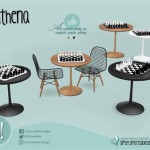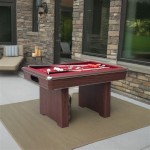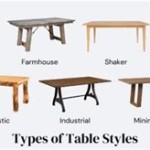How to Make a Table Skirt: A Comprehensive Guide
A table skirt can transform an ordinary table into an elegant and visually appealing centerpiece for events, trade shows, or even home decor. It's a versatile way to add a touch of sophistication, conceal storage underneath, or simply elevate the overall aesthetic of a space. While commercially available table skirts exist, crafting a custom-made skirt allows for complete control over fabric choice, dimensions, and style, ensuring a perfect fit and personalized design. This article provides a detailed, step-by-step guide on how to create your own table skirt, covering essential steps from measuring to sewing and finishing touches.
Key Point 1: Measuring and Fabric Selection
Accurate measurements form the foundation for a well-fitting table skirt. Begin by determining the table's perimeter. This is achieved by measuring each side of the table and adding those measurements together. For a round table, measure the circumference. The skirt length is determined by measuring the distance from the tabletop to the desired hemline. Consider the event or function when choosing the skirt length. A full-length skirt that reaches the floor creates a formal look, while a shorter skirt offers a more casual feel.
Once the perimeter and length are established, calculate the necessary fabric. To account for gathers or pleats, a general rule is to multiply the table perimeter by a fullness factor. A fullness factor of 1.5 provides moderate gathers, while a factor of 2 creates fuller, more dramatic gathers. Add extra fabric for seam allowances (typically 1-2 inches) and hem allowance (typically 2-4 inches, depending on the desired hem type). Remember to purchase slightly more fabric than calculated as a contingency for errors or unexpected adjustments.
Fabric selection is crucial and depends on the desired aesthetic and durability. Polyester is a popular choice due to its wrinkle-resistance, affordability, and ease of care. Linen offers a classic and elegant look but requires more ironing. Cotton is a versatile option that is breathable and comfortable but may wrinkle easily. For outdoor events, consider fabrics treated for water resistance. Consider the weight of the fabric. Heavier fabrics create a more substantial drape, while lighter fabrics offer a softer, more flowing appearance. Swatch samples of different fabrics are recommended to assess their drape, texture, and color under the lighting conditions of the event space.
Additionally, consider the pattern or color of the fabric. Solid colors offer versatility and can be easily coordinated with other décor elements. Patterns can add visual interest, but ensure the pattern scale is appropriate for the table size. Small patterns may appear too busy on a large table, while large patterns may be lost on a small table. Before cutting the fabric, pre-wash it according to the manufacturer's instructions to prevent shrinkage after the skirt is completed.
Key Point 2: Cutting and Sewing the Skirt Panels
After calculating fabric requirements and selecting the desired material, the next step involves cutting the fabric into panels. Most table skirts are constructed from multiple panels seamed together to achieve the necessary perimeter. The number of panels will depend on the width of the fabric and the table perimeter. Divide the table perimeter by the usable width of the fabric (subtracting any selvage edges) to determine the required number of panels. For instance, if the table perimeter is 120 inches and the fabric width is 45 inches, then 120/45 equals approximately 2.67. Round up to 3, indicating that you will need 3 panels.
Using the skirt length measurement plus seam and hem allowances, cut each panel to the required dimensions. Ensure all panels are cut with the grain of the fabric running vertically to maintain a consistent drape. If using a patterned fabric, pay close attention to pattern matching to ensure the pattern aligns seamlessly across the panels. Pin the panels together, right sides facing, along the vertical edges. Use a straight stitch with a standard seam allowance to sew the panels together, creating one long continuous piece of fabric. Press the seams open to reduce bulk and create a smoother finish. Overlock or zigzag stitch the raw edges of the seams to prevent fraying.
There are different methods for attaching the table skirt to the table. One common method is to use hook and loop fastener tape (Velcro). Sew the loop side of the Velcro tape along the top edge of the skirt, on the wrong side of the fabric. The hook side will be adhered to the table edge. Alternatively, you can create a casing along the top edge of the skirt to insert a drawstring or elastic, which will then be tightened around the table. This method is suitable for lighter-weight fabrics and smaller tables.
For pleated skirts, measure and mark the pleat positions along the top edge of the skirt. Common pleat types include box pleats and knife pleats. Box pleats are created by folding the fabric in alternating directions, creating a series of flat, rectangular pleats. Knife pleats are created by folding the fabric in one direction, creating a series of angled pleats. Secure the pleats with pins or basting stitches before sewing them in place. If creating gathers, use a long basting stitch along the top edge of the skirt and gently pull the threads to create even gathers. Distribute the gathers evenly and secure them with pins.
Key Point 3: Hemming and Finishing Touches
Hemming the bottom of the skirt provides a clean and professional finish. A double-folded hem is a durable and widely used option. Fold the raw edge of the fabric up by the desired hem allowance (e.g., 2 inches) and press. Then, fold the hem up again by the same amount and press again. This creates a double layer of fabric that encases the raw edge, preventing fraying. Pin the hem in place and sew along the top edge of the folded hem, creating a secure and neat finish. For a more decorative hem, consider using a blind hem stitch, which creates an almost invisible hem on the right side of the fabric.
After hemming, inspect the skirt for any loose threads or imperfections. Trim any stray threads and press the skirt to remove wrinkles and creases. For a tailored look, consider adding decorative trims along the top edge or bottom hem of the skirt. Options include ribbon, lace, fringe, or decorative cord. These trims can be sewn or glued onto the skirt, depending on the material and desired effect. Additions like buttons or small bows are options for customization.
If using a hook and loop fastener tape attachment method, adhere the hook side of the Velcro tape to the edges of the table. Ensure the tape is securely attached to the table surface using a strong adhesive. Attach the skirt to the table by aligning the loop side of the tape on the skirt with the hook side on the table. Press firmly to secure the skirt in place. If using a drawstring or elastic casing, insert the drawstring or elastic through the casing and tighten it around the table to secure the skirt. Ensure the skirt is evenly distributed around the table and adjust as needed.
Finally, a thorough inspection is crucial. Step back and assess the overall appearance of the skirt. Ensure the hem is even, the pleats or gathers are evenly distributed, and the attachment is secure. Make any necessary adjustments or repairs. With careful planning, precise measuring, and attention to detail, you can create a beautiful and functional table skirt that enhances any event or space.

How To Make A Ruffled Table Skirt

D I Y Table Skirting For Birthday Wedding Party How To Decorate

How To Make A Ruffled Table Skirt

How To Make A No Sew Tulle Tutu Table Skirt

Diy Ruffle Table Skirt Cloth Wedding Linen Improved Version

Table Skirt Active In The Middle

No Sew Tulle Table Skirt Tutorial W Ribbons Easy Press Print Party

How To Make An Easy Reusable No Sew Table Skirt Teacher Blog Spot

No Sew Tulle Table Skirt Tutorial Unicorn Party Decor Diy

No Sew Tulle Table Skirt Tutorial W Ribbons Easy Press Print Party Diy Baby Shower Decorations








